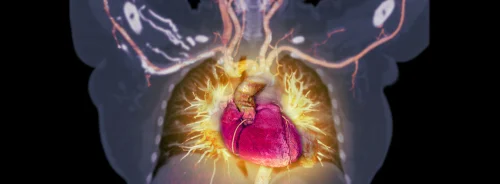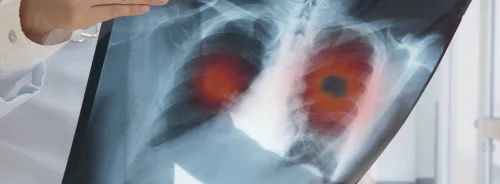Liver cancer is a significant global health concern, contributing to approximately 748,300 new cases and 695,900 deaths annually. It can arise as primary liver cancer, such as hepatocellular carcinoma, or as metastatic lesions from other cancers like colorectal, neuroendocrine tumours, ocular melanoma, and breast cancer. Surgical resection is often the cornerstone of treatment for both primary and metastatic liver cancer, offering the best chance for long-term survival and potential cure. Advances in diagnostic imaging and treatment strategies, including neoadjuvant therapies, have expanded the pool of patients eligible for surgery by 20-30%. However, the high rates of hepatic recurrence and surgical complications highlight the critical need for enhanced precision in both diagnostic and therapeutic approaches, as highlighted in an article published in the Journal of Nuclear Medicine.
Advancements in Diagnostic and Intraoperative Imaging
The efficacy of liver cancer surgery is heavily dependent on the precise identification and complete removal of cancerous lesions while sparing as much healthy liver tissue as possible. Accurate preoperative imaging is typically achieved through techniques such as magnetic resonance imaging (MRI), computed tomography (CT), and positron emission tomography (PET) scans, which offer detailed anatomical and functional insights. During surgery, however, traditional methods like palpation, visual inspection, and intraoperative ultrasound often fall short in detecting smaller or deeper lesions, especially with the growing trend towards minimally invasive procedures like laparoscopic and robotic surgeries.
Fluorescence-guided surgery has emerged as a promising solution, utilising dyes like indocyanine green (ICG) to highlight cancerous tissues. ICG, cleared hepatically, accumulates in cancerous tissues, providing a visual contrast under near-infrared light. This technique has been associated with fewer complications and shorter hospital stays. Nonetheless, ICG’s limitation lies in its inability to detect lesions more than 5mm below the liver surface, which can lead to incomplete resections or the unnecessary removal of healthy tissue.
The Promise of Hybrid Imaging Tracers
To overcome the limitations of current imaging techniques, hybrid imaging tracers that combine nuclear and fluorescence properties are being developed. These tracers aim to provide comprehensive imaging solutions that can be used both preoperatively and intraoperatively. A notable example is hHEPATO-Cy5, a new hybrid tracer designed for bimodal imaging of liver lesions. This tracer combines a fluorescent dye (Cy5) with a radiolabel, allowing for dual-modality imaging: preoperative radio guidance and intraoperative fluorescence guidance. The dual properties of this tracer enhance lesion localisation accuracy, which is crucial for planning the surgical approach and ensuring complete lesion resection.
Preclinical studies, including those involving porcine models, have shown that hHEPATO-Cy5 can effectively highlight liver lesions, displaying a characteristic fluorescence around the border of the lesion. This feature is particularly useful in distinguishing cancerous tissue from surrounding healthy tissue, thus aiding in precise excisions. The tracer’s design leverages the disrupted biliary clearance in liver lesions, which is hypothesised to be a key factor in its accumulation at disease sites. Moreover, using this tracer in conjunction with advanced imaging systems could provide real-time guidance during surgery, potentially reducing the risk of leaving behind residual disease or removing excess healthy tissue.
Challenges and Future Directions
Despite the significant advancements represented by hybrid imaging tracers, several challenges must be addressed for their broader clinical adoption. One of the primary challenges is understanding the exact biological mechanisms underlying the accumulation of tracers like hHEPATO-Cy5 in liver lesions. This knowledge is essential for optimising tracer design and ensuring consistent performance across different types of liver lesions and patient demographics.
Additionally, integrating nuclear and fluorescence imaging into clinical workflows requires the development of compatible and user-friendly imaging systems. These systems must be capable of seamlessly switching between modalities and accurately correlating the information obtained from each. This dual capability is crucial for minimising false positives and negatives, which can lead to unnecessary tissue removal or missed lesions. Furthermore, regulatory and ethical considerations, particularly concerning the use of radiolabelled tracers, must be thoroughly addressed to ensure patient safety and compliance with medical standards.
Future research should focus on refining the pharmacokinetics and biodistribution profiles of these hybrid tracers to maximise their diagnostic and therapeutic efficacy. This includes exploring the potential for real-time tracer uptake and clearance monitoring, which could provide surgeons with dynamic feedback during procedures. Moreover, clinical trials are essential to validate the safety and effectiveness of these tracers in a diverse patient population, ultimately paving the way for their routine use in hepatobiliary surgery.
The advent of hybrid imaging tracers like hHEPATO-Cy5 marks a significant advancement in the field of liver cancer surgery. By combining the strengths of nuclear and fluorescence imaging, these tracers offer a comprehensive solution for the accurate identification and excision of liver lesions. The dual-modality approach not only enhances surgical precision but also promises to improve patient outcomes by reducing recurrence rates and surgical complications. As research advances these technologies, integrating hybrid imaging tracers into clinical practice could revolutionise the management of liver cancer, ushering in a new era of precision medicine and personalised surgical care.
Source: Journal of Nuclear Medicine
Image Credit: iStock






